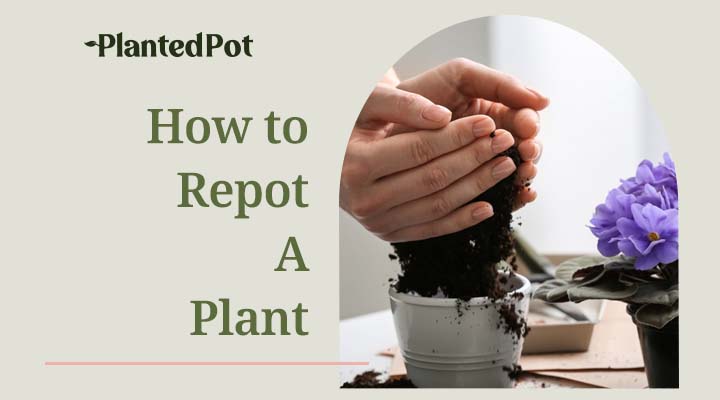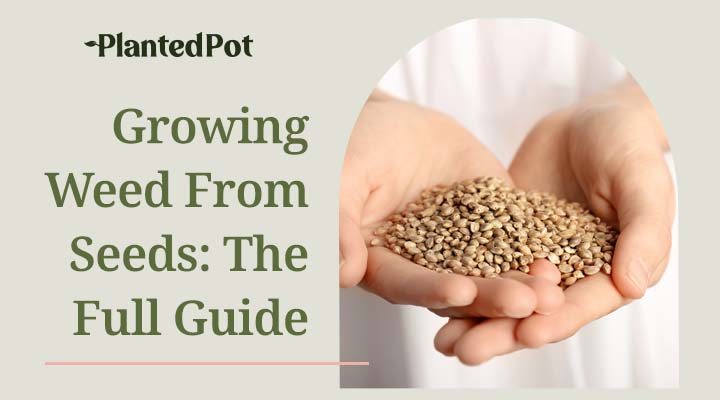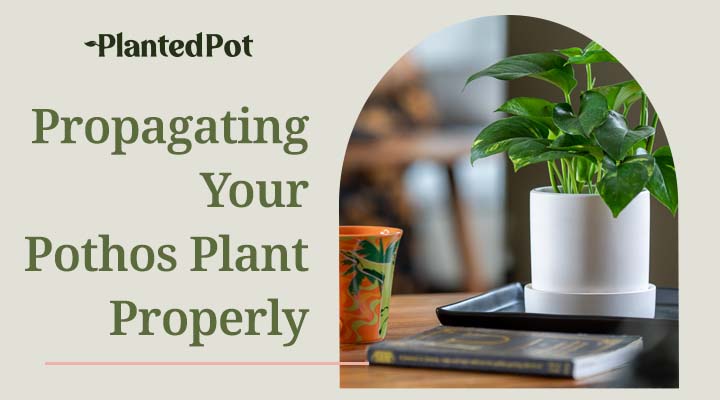
Fiddle Leaf Fig Care: How to Nurture Your Plant in Any Environment
Home / Fiddle Leaf Fig Care: How to Nurture Your Plant in Any Environment
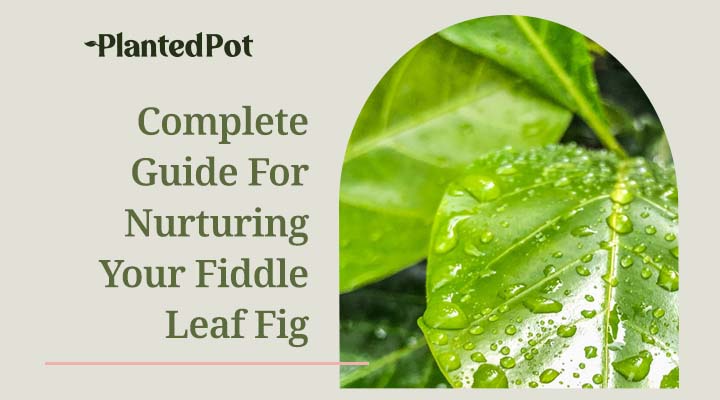
Fiddle Leaf Fig Care: How to Nurture Your Plant in Any Environment
- Olivia Richman
- March 8, 2021
- 7:42 pm
- No Comments
Looking for a trendy plant that will improve your home’s architecture and give any room’s decor a boost? Look no further than the Fiddle Leaf Fig. With the right Fiddle Leaf Fig care, this vibrant, dramatic plant will shine and make a sure statement.
The Fiddle Leaf Fig is a bit more difficult to care for than other houseplants. It can be rather picky and sensitive to change. You want to make sure that your watering, temperature, and placement are just right! But once you have it down, this plant will most definitely thrive and its beauty will be worth the extra care.
What is a Fiddle Leaf Fig?
The Fiddle Leaf Fig is quickly becoming the It Plant of 2021 thanks to its distinctive, shiny leaves and impressive, dramatic height (it can reach six feet or more). This large houseplant can easily become the focal point of any room’s decor.
The Fiddle Leaf Fig is part of the mulberry family, Moraceae. It’s native to tropical Cameroon in Africa, meaning it’s used to a humid, hot environment. In the Fiddle Leaf Fig’s natural environment, it rains lightly quite often, the sun drying up the moisture quite fast.
You have to be up to the challenge of owning this tropical plant — it can get pretty pricey! It’s also not as easy to care for compared to other houseplants. The Fiddle Leaf takes a bit more work, but it’s definitely a great gift for plant lovers who want a vibrant, eye-catching plant in their home.
What Are the Benefits of a Fiddle Leaf Fig?
The Fiddle Leaf Fig is more than just a stunning fixture in your home. This plant purifies the air, reducing formaldehyde, benzene, and carbon monoxide. It also kills odors! The larger the Fiddle Leaf Fig is, the better they are at purifying the air!
With fewer allergens in the air, you’ll notice many of your allergy-like symptoms fading. We highly recommend keeping some Fiddle Leaf Fig plants at your office or workplace, especially if you work in a warehouse environment. This plant is great at fighting sick building syndrome.
Is a Fiddle Leaf Fig Easy to Care For?
Fiddle Leaf Fig plants need a little extra attention compared to other houseplants. Like all plants, they need sun — but the Fiddle Leaf Fig needs a bit more sunshine because of its large leaves. Each cell in the plant needs light to make food. Sometimes, it can be tough to get enough light indoors to generate an adequate food supply.
The Fiddle Leaf Fig is also more prone to pests and diseases than other plants. It’s easy for this plant to become infected as well. You’ll also notice that their leaves are quite delicate and need to be handled with care.
This picky plant is also sensitive to temperature and other changes in your home. You’ll need to monitor your indoor environment to make sure that your Fiddle Leaf Fig can properly thrive. So caring for this plant involves a few extra steps, but it’s still very doable — and totally worth the effort!
Can You Grow a Fiddle Leaf Fig Plant Indoors and Outdoors?
The Fiddle Leaf Fig can be both an indoor and outdoor plant, though it grows quite large. For many people, it actually might end up outgrowing their living space. If you live in a sunny and warm state, the Fiddle Leaf Fig can also grow outdoors. Just make sure they get plenty of sunlight and water every two or three days.
How to Care for a Fiddle Leaf Fig
This tropical plant loves humid, warm climates and plenty of sunlight. They also enjoy a bit more water than, say, a succulent. While the Fiddle Leaf Fig needs some more attention than other houseplants, you’ll soon realize that the Fiddle Leaf Fig is easy to care for if you get into a proper routine.
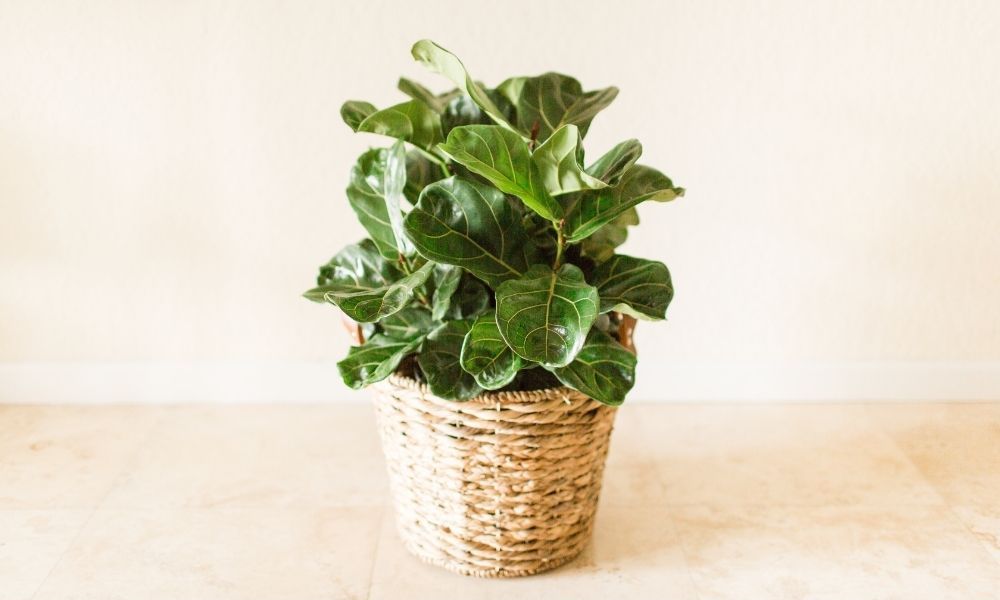
Choosing the Right Soil
The Fiddle Leaf Fig needs a good quality houseplant soil mix with perlite to help with drainage and peat moss to retain moisture. Look for soil that’s specifically designed to drain quickly and provide nutrients for your plant. Also, make sure it’s resistant to fungus and pests.
Finding the Right Pot
The most important thing to keep in mind is proper drainage. Overwatering is something that the Fiddle Leaf Fig doesn’t handle well at all. Look for a pot that retains some water (so not plastic) but has an adequate drainage system to protect the root ball.
The Fiddle Leaf Fig prefers snug pots. When they are put in larger pots, you’ll notice fewer leaves. That’s because the plant is focusing most of its growth on its roots system to fill out a large pot.
Your Fiddle Leaf Fig will need to be repotted every one or two years. Whenever you repot this plant, pick a pot that’s a few inches bigger. If your Fiddle Leaf Fig is already quite large, carefully trim the root ball and try repotting it back in the old pot with new soil.
Watering Your Fiddle Leaf Fig Plant
Overwatering and a lack of proper drainage can kill your Fiddle Leaf Fig. You’ll want to water your plant about once a week or every ten days. When the top 50% of the soil dries out, the plant needs more water.
And when you water the Fiddle Leaf Fig, get ready to drench it! Pour water until you see water coming out the drain holes into the saucer below the pot. You want to soak the Fiddle Leaf Fig until it’s dripping.
Since this might make some mess, try watering outside or in a bathtub, letting it drip for an hour or two. Or place a drip tray below it if you are unable to move the plant each time. Just make sure the roots aren’t sitting in excess water.
The Fiddle Leaf Fig is a tropical plant that’s used to rainforest weather. So think a sudden, heavy rainfall followed by strong sunlight that completely dries the plant before more rain. Insert your finger into the top two inches of the soil to make sure it’s dry before watering again.
Placement and Lighting
Fiddle Leaf Figs grow best with consistent, bright, filtered light. Place your Fiddle Leaf Fig in a bright room, nearby a window. You don’t want the light to touch it directly, however. Turn the plant every few months or when you notice it starting to lean towards the light source. You want all the leaves to receive equal sunlight. Once you’ve found the perfect spot, do not move your Fiddle Leaf Fig! This picky plant will thrive when it has found a great, sunny location.
Remember to avoid areas that can get cold. So, don’t pick a spot that’s directly in front of a drafty window, air vent, or exterior door. If you notice the air conditioner moving the leaves, move your Fiddle Leaf Fig where it won’t be directly impacted by the AC.
Humidity and Temperature
This is a tropical plant that enjoys warm temperatures. They are can adapt to home and office climates, but they have to be protected from cold drafts. Fiddle Leaf Figs also thrive in humidity. To mimic their rainforest home, mist its leaves to increase humidity around your plant. This is especially important to do during dry winter months.
Pruning a Fiddle Leaf Fig Plant
If you notice that your Fiddle Leaf Fig is lopsided or that some leaves have brown spots, you might want to prune your plant. You will also need to prune Fiddle Leaf Figs that are outgrowing your home and about to hit the ceiling! Luckily, pruning this plant is quite simple.
Wait until the late spring or summer to prune your Fiddle Leaf Fig. Trimming during the winter can shock your plant, making it harder for them to heal and form new growth. Try to never remove more than 10% of your plant at a time as too many cuts can also send the plant into shock.
Using clean pruning shears, cut at an angle between two nodes on the branch. Dab the area after with a damp tissue to speed up the healing process. A healthy plant will grow two split branches from the branch you pruned and form new leaves on each.
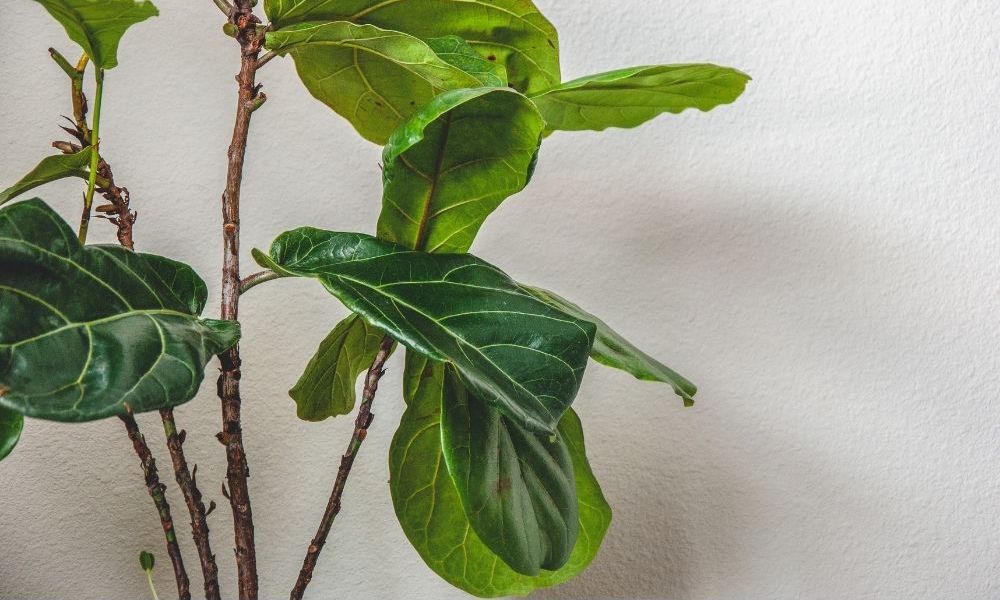
Feeding Fiddle Leaf Fig Plants
Fiddle Leaf Figs need fertilizer to thrive. A little bit of food will encourage root health. Fertilize them through the spring and fall using an organic houseplant fertilizer. During the spring, feed them once. During the summer, feed them each month.
Don’t feed your Fiddle Leaf Fig in the winter! That’s when the plant grows slower. Over-fertilization can cause the Fiddle Leaf Fig to grow in a “leggy” way, meaning the branches get too long and thin. It can even lead to death.
You can also use a slow-release fertilizer in the soil when you first get the plant so you don’t have to fertilize them for the first six months of owning them.
Common Fiddle Leaf Fig Plant Issues
Succulent care is a walk in the park, but Fiddle Leak Figs are a bit finicky. They aren’t as easy to care for as other more lowkey houseplants. Luckily, it’s pretty easy to notice when something is wrong with your Fiddle Leaf Fig. We know how to help you fix some of the common problems, ensuring your plant stays healthy and happy.
Dropping a Lot of Leaves
This is caused by improper watering and temperature. If you are watering your plant too much or too little, your Fiddle Leaf Fig might shed a lot of leaves. Extreme temperatures (both too hot or too cold) will also cause your plant to drop leaves like crazy.
To remedy this problem, check the location of your Fiddle Leaf Fig. It might be too close to a draft or door. Or maybe it’s too close to an AC or heater. Remember that the Fiddle Leaf Fig likes humidity and warm tropical weather. Keep the soil moist but not soggy. Mist your plant regularly. And only water when the top three to four inches of soil is dry.
Brown Spots on the Leaves
Do you notice brown spots on your leaves? This often happens from overwatering and poor drainage, both of which lead to root rot. Root rot will eventually spread to the leaves of your plant. Brown spots can also be the result of pests or underwatering. There are many culprits to explore here!
First, inspect the roots of your Fiddle Leaf Fig. Check that they aren’t brown and mushy. If they are, your plant is getting too much water or not draining properly. It’s best to let your plant dry out for two weeks. This allows the roots to recover. Then, remove the affected leaves. Cut off anything brown, including mushy parts of the roots. Finally, repot your plant.
Use a magnifying glass to see if there are insects or webs on your plant. Insects might also eat holes in the leaves where the brown spot first was. If you spot insects, use neem oil or even baking soda and mineral oil to remove them. Spray affected areas of the plant weekly with a homemade solution.
If you have brown, curly spots on your leaves, your plant is too dry. Your plant might also be in an environment that lacks moisture. Try misting your plant every one or three days or placing a humidifier near it.
Tan and White Spots on the Top of Leaves
This could be a sign that your Fiddle Leaf Fig is sunburned. A sunburn is caused by the plant getting too much direct sunlight, giving it a bleached appearance. The spots will be on the top of the leaves. They will be red or yellow in color.
Sunburned spots should be removed with sharp scissors or pruning shears. After trimming away the spots, relocate your plant to an area in the home that protects it from direct sunlight.

How Do I Know if My Fiddle Leaf Fig Plant is Dying?
Your Fiddle Leaf Fis may be dying if you notice excessive leaf loss, brown spots, yellow leaves, holes in the foliage, curled leaves, or white on the leaves. Luckily, you can fix most of these issues with the right care and simple changes.
But, if you notice that your Fiddle Leaf Fig has brown spots on top of yellow leaves, your Fiddle Leaf Fig might have a bacterial infection. If you don’t act soon, the leaves will start to fall off. Sadly, by this point, it’s often too late to save your Fiddle Leaf Fig (even with proper care).
If you still want to try to save your plant, cut off all the leaves with brown spots. Repot your plant with fresh, sterile soil. Put it in a spot with plenty of light (but not direct sun). It’s important to also go easy on the water until it recovers.
Are Fiddle Leaf Fig Plants Poisonous?
The Fiddle Leaf Fig is gaining popularity as a houseplant. But, it’s important to keep in mind that it’s poisonous to pets — both dogs and cats.
If your pet ingests a part of the Fiddle Leaf Fig, it will cause oral irritation and vomiting. Your pet might also have difficulty swallowing. Take your pet to the vet immediately if you notice any of these symptoms or you see that parts of the Fiddle Leaf Fig are missing.
Try placing your Fiddle Leaf Fig in an area where your pet can’t get to it. This can be pretty tough since the Fiddle Leaf Fig is so large. But you can keep it in a room that your pet doesn’t have access to, like an office.
Final Thoughts – Fiddle Leaf Fig Care
The Fiddle Leaf Fig is a picky plant. But for many houseplant lovers, this plant is worth the effort. It’s glossy, bright, and large, making it an impactful eye-catching addition to any room. It’s no wonder that it’s a trending plant that decorators and plant enthusiasts adore! Here are some quick things to keep in mind if you plan to care for a Fiddle Leaf Fig:
- Quick draining soil
- A snug pot with proper drainage
- Soak the Fiddle Leaf Fig until it’s drenched — but make sure the top 50% of soil is completely dry before watering
- Place the Fiddle Leaf Fig in a bright room away from direct sunlight
- Rotate your plant periodically
- Mist your plant frequently
- Keep your home warm
- Don’t let your plant near AC or drafts
- Feed the Fiddle Leaf Fig in the spring and summer, but not winter
While picky, you can see that the Fiddle Leaf Fig is still quite easy to care for once you learn its preferences. Once you find the perfect spot for your plant and get a routine down, the Fiddle Leaf Fig will thrive! And it will become one of the most beautiful things in your home! Remember, we’re always here for your questions at Planted Pot — contact us anytime about your plant needs!


